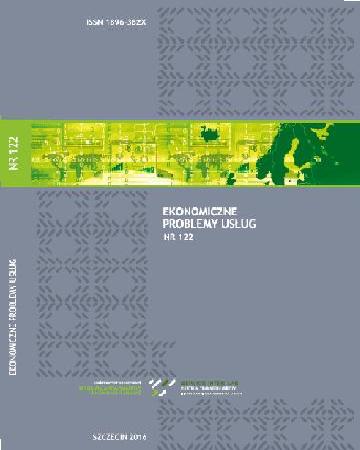
ISSN: 1896-382X
eISSN: 2353-2866
OAI



Issue archive /
nr 117 2015
Teleinformatyczne wspieranie koncepcji funkcjonowania organizacji
(Information and communication technologies as an support for concepts of organization functioning)
| Authors: |
Tomasz
Lipczyński
Zachodniopomorski Uniwersytet Technologiczny w Szczecinie |
| Keywords: | Information and Communication Technologies organizational creativity supporting of organizations |
| Data publikacji całości: | 2015 |
| Page range: | 8 (223-230) |
Abstract
The aim of this article is to analyze the possibilities of Information and Communication Technologies as a tool to support the new concept of the organization functioning. The article focuses on organizational creativity, which is one of the key types of entrepreneurial activity renewing the organization. Such an approach to provide the required scientific basis for the organizational creativity and to identify the role of Information and Communication Technologies in supporting organizational creativity.
Download file
Article file
Bibliography
| 1. | Arora A., Nandkumar A. (2012), Insecure advantage? Markets for technology and the value of resources for entrepreneurial ventures, „Strategic Management Journal”, No. 33. |
| 2. | Batey M. (2012), The Measurement of Creativity: From Definitional Consensus to the Introduction of a New Heuristic Framework, „Creativity Research Journal”, Vol. 24. |
| 3. | Bitterer A. (2011), Hype Cycle for Business Intelligence, Gartner Inc., CT, Stamford. |
| 4. | Bratnicka K. (2013), Understanding the organizational creativity through the lens of a dynamic capability framework, w: Managing to make a difference, British Academy of Management, Liverpool. |
| 5. | Brocke J. von, Seidel S., Simon A. (2010), Bridging the gap between enterprise content management and creativity: a research framework, Proceedings of the 43rd Hawaii International Conference on System Sciences, IEEE Computer Society. |
| 6. | Chan J., Mann L. red., (2010), Creativity and innovation in business and beyond: Social science perspectives and policy implications, Routledge, London–New York. |
| 7. | Creativity and Prosperity: the Global Creativity Index Martin Prosperity Institute 2011, http://martinprosperity.org/media/GCI%20Report%20Sep%202011.pdf. |
| 8. | Drazin R., Glynn M.A., Kazanjian R.K. (1999), Multilevel theorizing abort creativity in organizations. A sense-making perspective, „Academy of Management Review”, 24. |
| 9. | Driori I., Honig B. (2010), Organizational failure and the dark side of creativity: A framework based on the theory of practice, Proceedings from Academy of Manage-ment, Montreal. |
| 10. | Florida R. (2002), The rise of the creative class: How it’s transforming work, leisure, community and everyday life, Basic Books, Cambridge. |
| 11. | Gong Y.P., Cheung S-Y., Wang M., Huang J-C. (2012), Unfolding the proactive process for creativity. Integration of employee proactivity, information exchange, and psy-chological safety perspectives, „Journal of Management”, No. 38. |
| 12. | Klijn M., Tomic W. (2010), A review of creativity within organizations from a psychological perspective, „Journal of Management Development”, No. 29. |
| 13. | Kraśnicka T. (2012), Innowacyjność jako wymiar przedsiębiorczości w małych i średnich firmach (wyniki badań), w: Przedsiębiorczość – natura i atrybuty, red. K. Jaremczuk, PWSzZ, Tarnobrzeg. |
| 14. | Malewska K. (2010), Ograniczenia podejścia zasobowego w zarządzaniu strategicz-nym, A. Kaleta, K. Moszkowicz (red.), w: Zarządzanie strategiczne w praktyce i teorii, Wydawnictwo Uniwersytetu Ekonomicznego we Wrocławiu, Wrocław. |
| 15. | Mumford M.D., Medeiros K.E., Partlow P.J. (2012), Creative thinking: Processes, strategies, and knowledge, „The Journal of Creative Behaviour”, No. 46. |
| 16. | Olszak C.M. (2014), An Overview of Information Tools and Technologies for Competi-tive Intelligence Building. Theoretical Approach, „Issues in Informing Science and Information Technology”, Informing Science Institute, No. 11, California. |
| 17. | Sterling L., Taveter K. (2010), The Art of Agent-Oriented Modeling, The MIT Press Cambridge, London. |
| 18. | Wooldridge M. (2009), An Introduction to Multi Agent Systems, John Wiley & Sons Ltd., New York. |